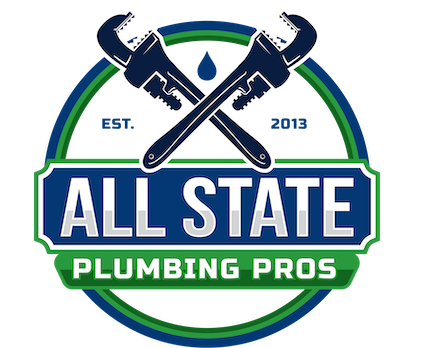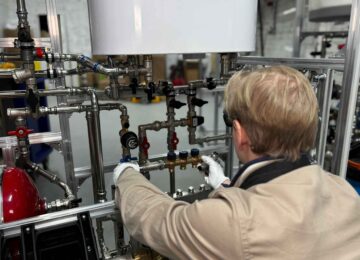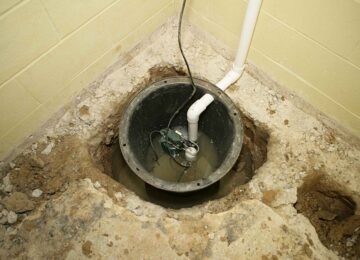Underground water leaks are among the hardest plumbing issues for homeowners to recognize because they often stay hidden until serious damage has already occurred. Unlike a dripping faucet or burst pipe that’s visible, these leaks develop beneath soil, concrete, or flooring, making detection difficult without professional help.
Homeowners may first notice warning signs such as damp patches in the yard, unusually high water bills, or reduced water pressure, all indicators that water is escaping underground. If ignored, these leaks can lead to further damage such as soil erosion, foundation problems, mold growth, and costly repairs.
So, how does a plumber find a water leak underground when it’s not obvious to the homeowner? Licensed plumbers rely on advanced techniques like acoustic listening devices, pressure testing, and thermal imaging cameras to detect hidden leaks. By understanding the causes, warning signs, and professional leak detection methods, property owners can act early and prevent major damage.
Signs of an Underground Water Leak
Signs of an underground water leak are not always obvious at first, but early detection can save homeowners from structural damage and expensive repairs. Identifying these warning signs quickly helps ensure that a plumber can pinpoint the leak before it worsens.
Here are several telltale signs of an underground water leak, including any visible damage :
- Unusually high water bills despite no change in water usage.
- Wet spots or damp patches in the yard or flooring.
- Bright green grass in one patch during dry weather, caused by extra moisture underground.
- Decreased water pressure, especially when multiple fixtures are in use.
- Subtle dripping or running sounds even when all faucets are off.
- Foundation cracks or shifts due to soil erosion from escaping water.
Each of these signs indicates that water is escaping somewhere underground. If multiple symptoms appear at once, it’s time to call an experienced plumber for inspection.
Causes of Underground Water Leaks
Underground leaks rarely happen by chance. They are usually the result of stress on the plumbing system over time or external environmental factors. Knowing the common causes of pipe leaks helps homeowners understand why leaks occur and how to prevent them.
Several key causes of underground water leaks include:
- Pipe corrosion from minerals, chemicals, or old age.
- Shifting soil and ground movement that places stress on buried pipes.
- Tree root intrusion, where roots search for moisture and break into pipes.
- Poor installation or use of substandard materials during construction.
- Aging infrastructure, especially in older homes with outdated water lines.
- Freezing and thawing cycles that expand and contract pipes, creating cracks.
Leaks can develop in supply lines, sewer lines, or water mains, depending on the conditions. Preventive maintenance and inspections by professional plumbers can help detect leaks and weak points before they fail.
Methods for Detecting Underground Water Leaks
Detecting an underground water leak requires more than just guesswork. Professional plumbers rely on a combination of traditional observation and advanced technology to locate the exact source of the problem.
The most common detection methods include checking the water meter readings :
- Visual inspection of the property for surface signs like wet patches, damp soil, or greener grass.
- Acoustic leak detection, where plumbers use listening devices to pick up the sound of water escaping underground.
- Pressure testing which involves measuring water pressure levels to determine if a leak is present.
- Thermal imaging, which uses temperature differences in soil or walls to identify hidden water flow.
- Soil probing and tracer gas detection, advanced techniques that help pinpoint leaks without unnecessary digging.
Most plumbers will combine these methods to confirm results and reduce the risk of misdiagnosis.
Visual Inspection
A visual inspection is the first step in finding an underground leak. Plumbers or homeowners may notice areas of the yard that remain damp even in dry weather, or floors inside the home that feel unusually warm or soft, along with any dripping sounds.
Other simple checks include:
- Watching the water meter after shutting off all faucets, if it continues to move, a leak is likely present.
- Checking for unexplained drops in water pressure throughout the home.
- Inspecting visible plumbing fixtures and pipes for small leaks that could indicate larger hidden issues.
While a visual inspection can point to potential trouble spots, specialized equipment is usually needed to confirm the exact location.
Advanced Detection Methods
When leaks are not visible, plumbers turn to advanced detection methods. These tools allow professionals to pinpoint leaks with minimal disruption to the property.
- Acoustic leak detection: Sensitive microphones and headphones detect the sound of water escaping from underground pipes.
- Pressure testing: The plumbing system is pressurized, and any pressure drop indicates a leak in the pipe system.
- Thermal imaging cameras: Detect temperature differences caused by moving water beneath the soil or flooring.
- Tracer gas detection: A harmless gas is injected into pipes, and sensors track where it escapes, identifying leaks.
These methods provide accurate results, allowing plumbers to dig only where necessary instead of tearing up large areas of property.
Finding the Source of the Leak
Once tests confirm a leak exists, the next step is locating the exact spot where water is escaping. Accurate leak location is critical for determining the exact location, since unnecessary excavation can increase repair costs and property damage.
Plumbers use tools such as acoustic listening devices, soil probes, and thermal imaging cameras to narrow down the leak’s location. Pinpointing the source ensures that repairs target the right area the first time, saving time, money, and disruption.
Repairing the Leak
Repairing an underground water leak depends on the size and location of the damage. In many cases, excavation is required to access and replace the damaged section of pipe. However, modern plumbing offers alternatives that minimize disruption and reduce health risks.
- Traditional excavation: The plumber digs down to access and replace the broken pipe.
- Trenchless repair methods: Techniques like pipe bursting or lining allow repairs with less digging, preserving landscaping and driveways.
Regardless of the method, repairs should always be handled by licensed professionals to ensure the plumbing system is restored safely and effectively.
Preventing Future Leaks
Prevention is often less expensive than repair. Homeowners can reduce the risk of underground leaks by maintaining their plumbing system and paying attention to subtle sounds, addressing issues early.
Steps to prevent underground leaks include:
- Scheduling regular plumbing inspections to check for weak spots.
- Insulate pipes in areas prone to freezing.
- Fixing small leaks promptly to avoid larger failures.
- Monitoring water bills and pressure changes as early warning signs.
- Planting trees away from water lines to prevent root intrusion.
By being proactive and aware of local regulations, homeowners can avoid costly water damage and preserve the long-term integrity of their plumbing system.
Choosing the Right Plumber
Selecting a qualified plumber ensures underground leaks are handled properly. Homeowners should look for professionals with specialized training in stress pipes, leak detection, and repair.
Key factors when choosing a plumber include:
- Experience with underground leak detection.
- Proper licenses, certifications, and insurance.
- Positive customer reviews and referrals.
- Transparent pricing and multiple quotes before starting work.
A trusted plumber will not only fix the current problem but also provide advice on preventing future leaks.
What to Expect During the Repair Process
Understanding the repair process helps reduce stress when dealing with an underground leak. Typically, the steps include:
- The plumber inspects the property using detection equipment.
- The leak’s source is confirmed through testing.
- Excavation or trenchless repair is performed on the damaged pipe.
- The system is retested to confirm repairs are successful.
Depending on the leak’s complexity, additional steps may be necessary, but a professional will keep homeowners informed throughout the process.
Cost of Repair
Repair costs for underground leaks can vary widely based on the location, pipe type, and repair method.
Typical cost factors include:
- Depth of the pipe underground.
- Extent of excavation required.
- Materials used in the repair.
- Whether trenchless technology is used.
On average, homeowners can expect costs to range from $500 to $4,000 or more, depending on severity. Always request a detailed estimate before work begins.
DIY vs Professional Repair
While homeowners may be tempted to fix small leaks on their own, underground leaks are rarely a DIY project. Specialized equipment is necessary to detect and repair leaks safely, especially due to ground movement.
Attempting DIY repairs often leads to greater property damage, safety risks, or recurring leaks. Hiring a professional ensures that the problem is resolved correctly the first time and prevents future issues.
Common Mistakes to Avoid
When dealing with underground leaks, avoiding common mistakes can prevent significant damage and save time and money.
- Ignoring signs like high bills or damp spots.
- Delaying repairs increases the risk of structural damage.
- Attempting DIY fixes without the right training and tools.
- Skipping regular inspections, allowing leaks to go unnoticed.
Being proactive helps homeowners avoid costly consequences and maintain a healthy plumbing system.
Conclusion
Underground water leaks are a serious problem that can lead to costly repairs and structural damage if ignored. With early detection, the right tools, and professional expertise, plumbers can locate and repair these hidden leaks efficiently. By understanding the signs, causes, and solutions regarding the water supply, homeowners can take proactive steps to protect their property.
If you suspect an underground water leak or notice signs like rising bills or damp patches, don’t wait until the problem gets worse. At All State Plumbing Pros, our licensed team uses advanced leak detection tools to quickly locate and repair hidden leaks. Serving homeowners and businesses across Connecticut and New York, we’re available 24/7 for emergencies and long-term plumbing solutions. Contact us today for fast, reliable service you can trust.
FAQs
Can a plumber detect a water leak underground?
Yes, professional plumbers can detect underground water leaks using tools such as acoustic listening devices, pressure testing, and thermal imaging cameras. These methods allow them to locate leaks accurately without digging up large sections of property.
Is there a tool to find a water leak underground?
Yes, plumbers use specialized tools like acoustic leak detectors, soil probes, and thermal imaging cameras. These devices help identify where water is escaping underground, making the detection process faster and less invasive.
How to find a leak in a buried water pipe?
The best way is to call a plumber who uses advanced detection methods. While homeowners may spot signs such as wet patches or high water bills, professional testing with pressure equipment and imaging tools is usually required to locate buried leaks accurately.
How do I know if I have a busted water pipe underground?
Signs include reduced water pressure, unusually high bills, damp spots, or unexplained cracks in the foundation. In some cases, you may also hear running water when all fixtures are off. A plumber can confirm the issue with leak detection tools.

![How Does a Plumber Find a Water Leak Underground: Expert Guide Underground water leaks are among the hardest plumbing issues for homeowners to recognize because they often stay hidden until serious damage has already occurred. Unlike a dripping faucet or burst pipe that’s visible, these leaks develop beneath soil, concrete, or flooring, making detection difficult without professional help. Homeowners may first notice warning signs such as […]](https://allstateplumbingct.com/wp-content/uploads/2025/09/how-does-a-plumber-find-a-water-leak-underground-750x420.jpg)



Leave a Reply